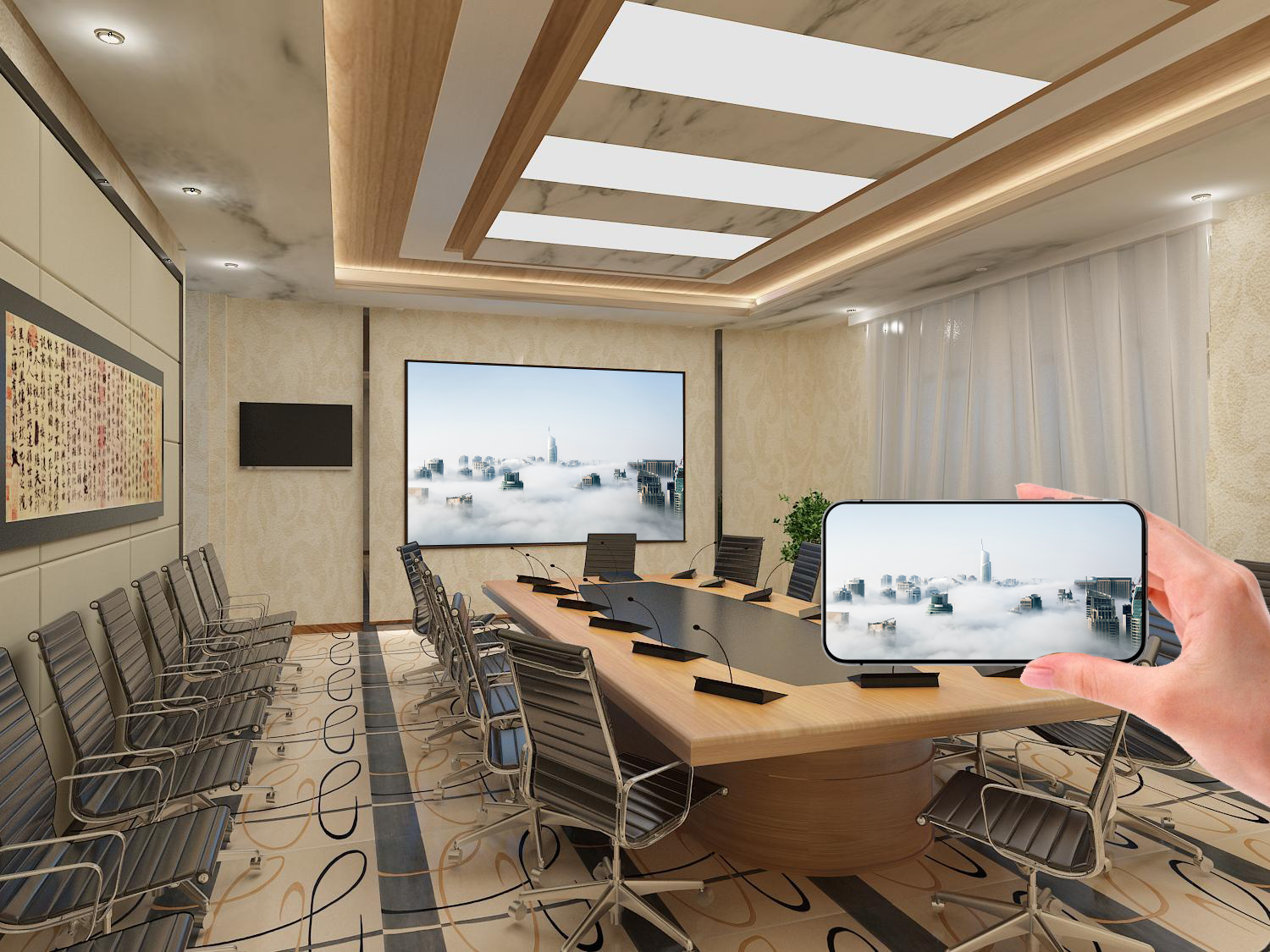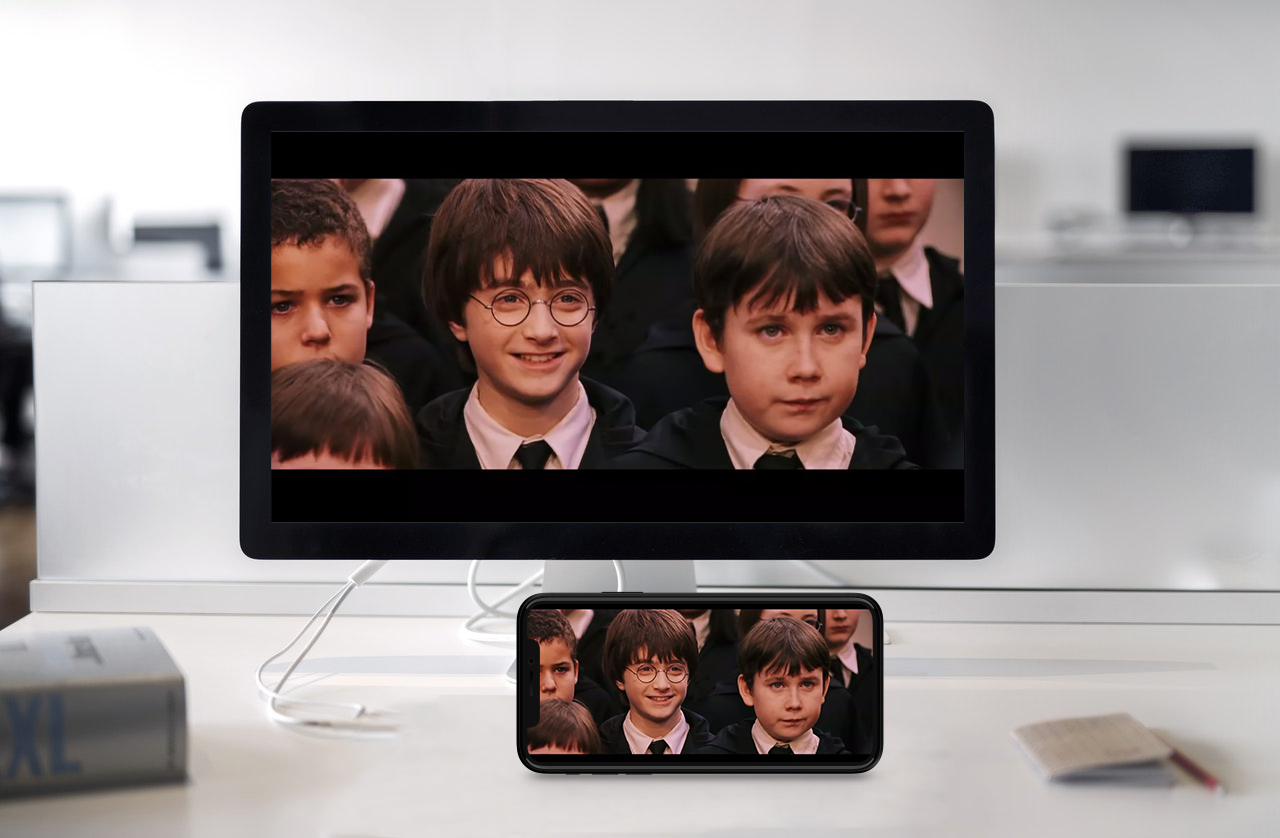Phone Screen Mirroring: A Multi-Scenario Solution for Content Flow
As our personal information hubs, phones store a massive amount of content, including work documents, personal photos and videos, and study materials. The phone screen mirroring solution uses hardware adaptation, protocol optimization, and customized features to present this small-screen content on a large screen with stability and high-efficiency interaction. It covers all scenarios—including office, education, home, and commercial settings—and completely solves the traditional mirroring pain points of “difficult connection, poor compatibility, and laggy experience.”
I. Core Technical Support: Breaking Device and Scenario Boundaries
(I) All-Protocol Compatibility
Using a “multi-protocol fusion” architecture, the solution simultaneously supports AirPlay, Miracast, DLNA, and proprietary high-speed protocols, covering iOS, Android, and HarmonyOS phones. An Apple phone’s “Screen Mirroring” feature can directly identify the device, and an Android phone can pair by tapping “Wireless Display” in the control center. Proprietary protocols from brands like Huawei’s Multi-Screen Collaboration and Xiaomi’s Screen Mirroring Assistant also work perfectly, ensuring that photos, videos, and documents from different brands of phones are cast to the large screen with no format errors or loss of quality.
For older phones with lower system versions, a “QR code mirroring” backup plan is available. By scanning a QR code on the large screen with a browser, temporary mirroring can be achieved in 3 seconds without needing to enable the system’s mirroring function, providing a device coverage rate of 99%.
(II) Stable Transmission Technology
Equipped with a dual-band Wi-Fi 6 module and a dynamic frequency hopping algorithm, the system maintains a stable 1080P/60fps high-definition transmission with latency controlled within 50ms, even with multiple devices running simultaneously and in congested signal environments. During peak hours in an office, screen switching is seamless when 8 phones are connected at once. At home, while a phone is mirroring a TV show, another person can be watching a video on a tablet and a third can be transferring files on a computer, and the large screen playback remains smooth. The audio-visual sync error is less than 20ms, preventing the awkward “lip-sync mismatch.”
The solution also supports 4K Ultra HD output, with a color reproduction rate of over 95%. The line precision of architectural drawings and the detailed textures of product videos are clearly visible on the large screen, meeting the needs of professional scenarios.
II. Scenario-Based Hardware Solutions: Customized Mirroring Terminals
(I) Office Scenarios: High-Efficiency Meeting Terminals
- Small Meeting Rooms (5-10 people): A desktop mirroring box about the size of a palm connects to the conference TV via HDMI. It supports “tap-to-mirror“—simply tap a phone to the box’s NFC area to automatically pair, which is perfect for quick-decision meetings. A built-in microphone allows for the synchronization of on-site audio, eliminating the need for an extra microphone during remote meetings.
- Medium Meeting Rooms (10-30 people): An integrated mirroring terminal combines mirroring with touch interaction. After mirroring a phone, you can directly annotate a PPT on the large screen, with annotations syncing to the phone in real time. It supports 4-phone split-screen mirroring, so client data from the marketing department and development progress from the tech department can be displayed in parallel, improving decision-making efficiency by 50%.
- Mobile Office Scenarios: A portable mirroring stick plugs into a projector’s HDMI port and supports direct hotspot connection (for no-network environments). A field worker can mirror a proposal from their phone at a client’s site, and after the meeting, a mirrored record with a watermark is generated for later reference.
(II) Educational Scenarios: Interactive Classroom Terminals
- Standard Classrooms: A wall-mounted mirroring terminal connects to an interactive whiteboard or a projector. A teacher can film an experiment with their phone and mirror it to the large screen for the whole class to observe. Students can submit answers from their phones, and excellent answers can be “pinned” to the mirrored display with one click, boosting class participation by 60%. A “teacher lock” feature prevents students from mirroring without permission and disrupting the class.
- Outdoor Field Classes: A rugged mirroring box with an IP54 waterproof and dustproof rating can be used with a portable screen. Students can film plant specimens or geological sections with their phones and mirror them, and the teacher can use a laser pointer to annotate key points on the big screen, taking the learning experience beyond the classroom.
(III) Home Scenarios: Entertainment Sharing Terminals
- Living Room Entertainment: A smart TV with a built-in mirroring module supports “off-screen mirroring“—after connecting, the phone’s screen can be turned off, saving power and protecting privacy, without affecting the playback on the large screen. A “picture-in-picture” mode allows you to mirror a movie while displaying phone notifications in a small window, balancing entertainment with communication. Parents can set up a “kids’ mode” to limit the duration and type of mirrored content.
- Multi-Room Linkage: Through a home gateway, the system enables multi-screen collaboration. After mirroring to the living room TV, content can be synchronized to the bedroom TV with one click, so you don’t need to reconnect when you switch rooms. A “phone remote” feature lets you use your phone to adjust the large screen’s volume and switch episodes, which is more convenient than a remote control.
(IV) Commercial Scenarios: Marketing Display Terminals
- In-Store Displays: A standing digital signage screen with a mirroring module allows a store clerk to mirror a product’s 3D video from their phone. Customers can scan a QR code to save high-definition materials to their phones. A “timed mirroring” feature automatically cycles through promotional content, saving staff time.
- Exhibition Booths: A rental mirroring terminal can support up to 100 phones connected simultaneously. Customers can mirror their personalized needs from their phones, and sales staff can respond in real-time on the large screen, increasing the conversion rate by 30%.

III. Innovative Features: From “One-Way Mirroring” to “Two-Way Interaction”
(I) Cross-Device Interaction
- Reverse Control: The large screen can directly control the phone. In a meeting, you can use the large screen’s touch interface to flip through a PPT on your phone and annotate key data. In class, a teacher can mark student homework submitted via a phone on the large screen, with the changes syncing back to the student’s device in real-time.
- Content Relay: Mirrored content from a phone can be seamlessly switched to a computer for further editing, and then mirrored back to the large screen. This is perfect for multi-device collaboration. For example, a salesperson can mirror a preliminary proposal from their phone, then refine the content on a computer back at the office without needing to reconnect to continue the presentation.
(II) Management and Security
- Permission Management: In office scenarios, a “whitelist” can be set up to only allow specific phones to mirror. In commercial scenarios, a “temporary mirroring code” allows visitors to mirror only after entering a verification code, preventing information leaks.
- Mirroring Records: The system automatically saves records of mirrored content, time, and device information. This allows for content traceability in an office, post-class review in education, and analysis of customer product interests in commercial settings.
IV. Tangible Value: A Dual Increase in Efficiency and Experience
After deploying this solution, an internet company saw its meeting prep time shrink from 15 minutes to 1 minute, and cross-departmental communication efficiency improved by 40%. A middle school that adopted the classroom mirroring solution saw a 70% increase in student homework submission efficiency and a 50% reduction in teacher grading time. A retail chain that used the marketing mirroring solution saw customer dwell time increase by 30% and the average transaction value increase by 25%.
The core of the phone screen mirroring solution is to enable “small-screen content” to deliver maximum value in “large-screen scenarios.” It’s not just a technical integration; it’s a precise response to scenario-specific needs. Through hardware adaptation, innovative features, and security guarantees, it ensures that every mirroring session is a starting point for improved efficiency, ultimately maximizing the value of your small-screen content on a big screen.